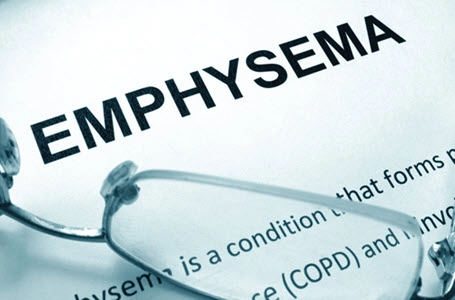Examine and Correctly Code This Stage II Emphysema Case Study
Hint: Choose your emphysema code based on the type, not severity. Correctly coding an emphysema diagnosis can be difficult even for seasoned coders. The J43.- (Emphysema) code family of the ICD-10-CM code set includes several codes, notes, and instructions to ensure your claim is correct. Check out this pulmonology case study to test your emphysema coding knowledge. Dive Into the Documentation Clinical History: Patient is a 68-year-old female with a history of hypertension that is being treated with medication. She presents to our pulmonology practice today with a continued complaint of a cough. This is her fourth visit over the past six months, each time with the same complaint. She has had two chest infections, one of which resulted in an admission to the hospital. She reports that she has experienced increasing fatigue and trouble breathing on exertion over the past few weeks. She also is a former smoker (20-year smoking history; 1 pack per day). Physical Exam: Patient is suffering from shortness of breath (SOB), dyspnea on exertion (DOE), and disturbed sleep due to the cough. She is also experiencing fatigue, which interferes with her daily life. Findings: Hyperinflation of the chest, some use of accessory muscles of respiration, crackles, and an occasional audible wheeze. Cardiac exam reveals a regular heart rate, S1, S2, and no abnormal sounds. Procedures: Spirometry pre- and post-bronchodilator. Pre-Bronchodilator Results: FVC 1.64, FEV1 0.98, FEV1% predicted 47%, FEV1/FVC ratio 60% Post-Bronchodilator Results: FVC 1.62, FEV1 0.96, FEV1% predicted 55%, FEV1/FVC ratio 59%. Diagnosis: Stage II, moderate emphysema After examining the pulmonologist’s report, your next step will be to determine which CPT® and diagnosis codes to use for your claim. Pay Attention to Bronchodilator Administration Under the procedures portion of the pulmonologist’s note, you’ll see the physician performed spirometry without and then with bronchodilator administration. Pulmonologists will use a bronchodilator to see how effective a certain medication may be on the patient’s breathing problems. By performing spirometry before and after a bronchodilator is administered, the physician can compare the results to check the efficacy of the bronchodilator. In the CPT® code set index, Spirometry provides you with a list of codes to verify. When you turn to the Medicine/ Pulmonary section of the code set, you’ll find 94060 (Bronchodilation responsiveness, spirometry as in 94010, pre- and post-bronchodilator administration). This is the code you’ll assign for the procedure performed during the encounter. When you examine 94060 in the CPT® code set, two parenthetical notes with further instructions stand out for this case study. The first note instructs you to not report 94060 in conjunction with the following codes: You shouldn’t report 94060 with these codes because the procedures are part of spirometry and the administration of the bronchodilator. The second parenthetical note instructs you to use 99070 (Supplies and materials (except spectacles), provided by the physician or other qualified health care professional over and above those usually included with the office visit or other services rendered (list drugs, trays, supplies, or materials provided)) or another appropriate supply code (such as a HCPCS Level II code) to report the bronchodilator supply separately. Pinpoint the Correct ICD-10-CM Codes Emphysema is a chronic lung condition that develops over time where the alveoli (air sacs) can collapse, narrow, stretch, overinflate, or narrow. Any damage to the alveoli is irreparable and results in reduced respiratory function and breathlessness. The most common symptoms of emphysema include cough, rapid breathing, shortness of breath, abnormal sputum, and wheezing. The condition is also caused by several factors, such as smoking, exposure to chemical fumes, dust, and other air pollution, respiratory infections, or an inherited alpha-1 antitrypsin deficiency. The physician’s documentation lists the diagnosis as “stage II, moderate emphysema.” Do you need additional characters to specify the stage or severity of the condition? “Surprisingly, there aren’t any emphysema codes that are related to stage or severity. If there was information related to the type of emphysema, such as panlobular, there are other codes,” says Julie Davis, CPC, COC, CRC, CPMA, CPCO, CDEO, AAPC-approved instructor, risk adjustment manager for Physician Health Partners in Denver, Colorado. In this case study, the provider didn’t specify the type of emphysema, so you’ll assign an unspecified code. When you search the ICD-10-CM Alphabetic Index, you’ll find Emphysema (atrophic) (bullous) (chronic) (interlobular) (lung) (obstructive) (pulmonary) (senile) (vesicular). Turning to the tabular list to verify the code listed with the entry, you find J43.9 (Emphysema, unspecified). When you analyze the physician’s documentation, in addition to the emphysema diagnosis, you’ll find a personal history of smoking. Parent code J43.- features instructions to use additional code Z87.891 (Personal history of nicotine dependence) to report a history of tobacco dependence. You should also verify this code in the tabular list before making your final code selection. Do you need to code the history of hypertension? “Tricky question. If the hypertension or the medication the patient takes for it would affect the patient care, treatment, or management, then, yes, you would have to. The fact that the provider documented makes me think that it was considered in their treatment of the patient,” Davis says. With this reasoning, you’ll code the patient’s hypertension in your claim. In the ICD-10-CM Alphabetic Index, you’ll find Hypertension, hypertensive (accelerated) (benign) (essential) (idiopathic) (malignant) (systemic), which lists I10 (Essential (primary) hypertension). As always, you should then turn to the tabular list to verify the code. Put a Bow on Your Claim How did you do? To recap this emphysema case study, you’ll assign 94060 to report the spirometry without and with bronchodilation. For the diagnoses, you’ll need to assign three separate ICD-10-CM codes in your claim — J43.9, Z87.891, and I10.





